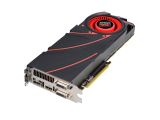The other day, a report reached our ears (and eyes) about NVIDIA finally moving beyond the 28nm chip production technology, but there was no sign of Advanced Micro Devices doing the same. Now we know why.
Back on December 3, 2014, it came to our attention that Taiwan Semiconductor Manufacturing Company, TSMC for short, had finally passed validation stage for the 16nm FinFET manufacturing technology.
This meant that it could finally start producing 16nm graphics processing units and other chips at some point in 2015, probably around July.
However, AMD was not on the list of companies that had already flagged the production technology as part of their plans. Even though NVIDIA most definitely was.
AMD will not be ordering its GPUs from TSMC anymore
Which is to say, while current-generation and past chips designed on 28nm or older technologies will still be provided by the Taiwanese foundry, the next generations won't be.
Instead, as we dared to assume a few days ago, the Sunnyvale, California-based company will use Globalfoundries.
Devinder Kumar from AMD said during an investor meeting that Globalfoundries had made enough progress for the corporation to be more comfortable using it moving forward.
Originally, AMD owned the foundry, but it sold it in 2008 in order to make some money that was much needed at the time.
At the moment, Globalfoundries is making 20nm chips and is working with Samsung on 14nm technology. Samsung will launch an SoC based on it next year actually.
Currently, high on the list is moving to FinFET chips, which have a bigger surface area, and thus, help transistors switch faster. They are more power-efficient, smaller, and cheaper to make than others.
16nm FinFET might not even be used at all
Notable about AMD's words on this matter is that the use of 16nm technology is not guaranteed, or even mentioned specifically.
“Some 20nm products” could mean that AMD will make 20nm GPUs as originally planned (before TSMC decided to skip the process altogether) and that FinFET will jump straight to 14nm, since that's already being worked on with Samsung's help, even if SoCs are a different matter compared to GPUs.
If AMD goes with 20nm for its next graphics cards and laptop GPUs and APUs, it might lose a bit in terms of efficiency to NVIDIA, forcing it to offer some better performance. We suppose we'll have to wait and see what goes down in 2015.

 14 DAY TRIAL //
14 DAY TRIAL // 


